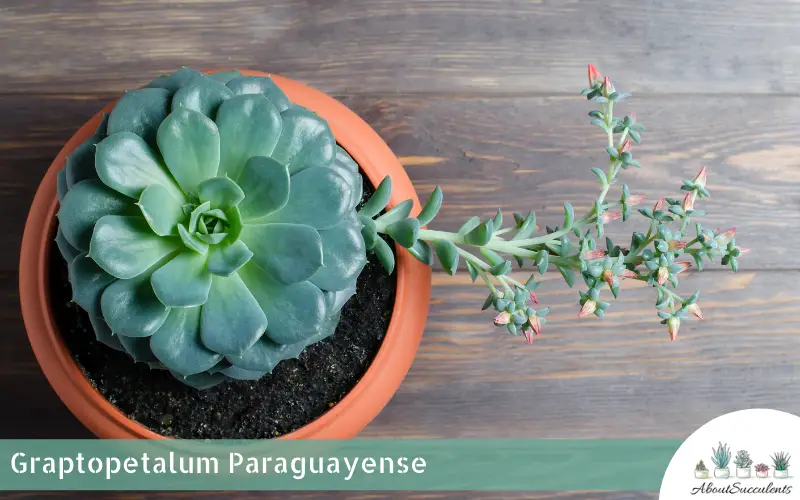
If the house is the place the guts is, then it’s greatest adorned with charming, colourful, and alluring succulents that may assist every day change into vibrant, cheerful, and stress-free.
And it’s not simply their aesthetic enchantment that makes succulents a favourite amongst plant hobbyists.
Succulents are straightforward to develop and take care of. These are no-fuss forms of flora which might be resilient and sturdy sufficient to outlive harsh circumstances.
Why Succulents Make Good Indoor Crops
When you reside a busy life-style, you don’t have to fret about watering your succulents. Succulents retailer water of their stems and leaves which permits them to tolerate lengthy durations of drought and hard desert circumstances.
In contrast to different species of crops, succulents ought to solely be given water when their soil has gone utterly dry. Giving the soil water whereas it nonetheless retains moisture can result in root rot and kill your succulent.
To additional defend your indoor succulent from the specter of root rot, plant it in a pot fabricated from unglazed ceramic or terracotta which absorbs moisture rapidly from the soil. Ensure that the pot has a drain gap to filter out extra water.
On your selection of soil, go for sandy soil or a industrial succulent mix with added supplies corresponding to pumice, perlite, coarse sand, and lava rocks to enhance drainage.
As an indoor plant, you solely must ensure that your succulents get no less than 6 hours of keen on full daylight every single day. When you don’t have a window that brings in sufficient daylight, place your succulent beneath a Develop Gentle.
6 Greatest Indoor Succulents
There are lots of of types of succulents to select from. You possibly can get misplaced in a nursery on the lookout for the appropriate species that suit your tastes and sensibilities. We’ve made purchasing simpler for you by developing with our listing of one of the best indoor succulents to your residence.
1. Graptopetalum Paraguayense
Graptopetalum paraguayense is the proper succulent to your residence in case you expertise winter as ‘Ghost Plant’ is cold-hardy and might tolerate frosty climate.
With its fleshy, grayish-white coloured, opalescent, ghost-like leaves, having Graptopetalum paraguayense inside your house is usually a fast, dialog starter amongst your company.
The succulent is native to Mexico and doesn’t develop greater than 1 foot (30.48 cm) in peak and occupies solely 3 ft (91.44 cm) of house. Within the springtime, look out for small, star-shaped, and yellow-colored flowers.
In case your company are thrilled with Ghost Plant, you’ll be glad to know that it produces offsets or pups that you should utilize for propagation so that you can provide them as items to your mates.
2. Lithops
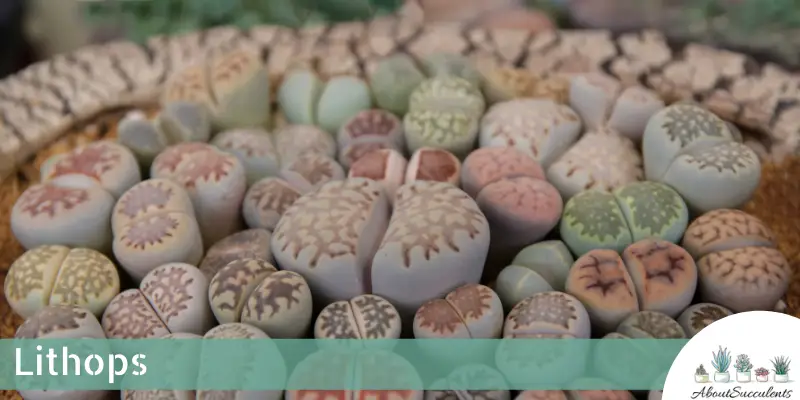
Lithops is native to South Africa and is a genus of succulent crops that resemble stones or pebbles. What seems to be like rocks are literally 2 fused plump leaves which have a slit between them.
Come springtime, leaves will sprout forth from this slit, and within the late summer time or fall months, anticipate to see yellow or white-colored flowers that appear like daisies.
There are near 150 varieties and almost 40 species of “Residing Stones” or “Pebble Plant” to select from. Every “stone” seems to be distinctive with its personal set of shapes, markings, and coloration mixtures that vary from pink, rust, brown, and gray.
Lithops would make an fascinating dialog piece in your house. A few of your mates would possibly argue that your crops look extra like break up brains than residing stones!
3. Aeonium Arboreum ‘Zwartkop’
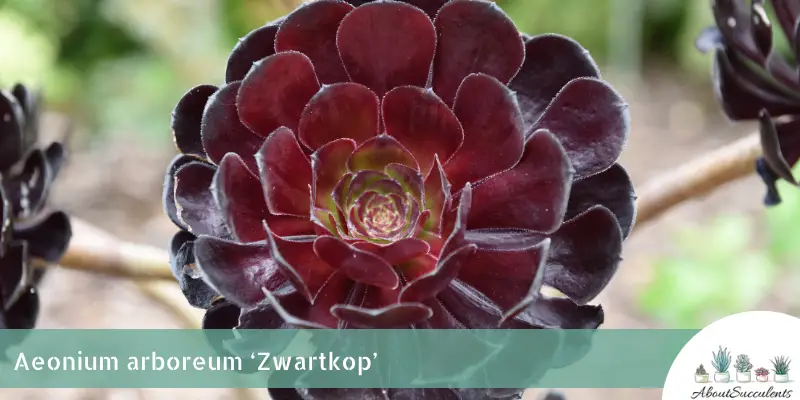
One cause why you must have Aeonium arboreum ‘Zwartkop’ in your house is that this succulent gained the distinguished Award of Backyard Advantage from the Royal Horticultural Society.
Zwartkop can develop as much as 4 ft (120 cm) in peak and unfold 2 ft (60 cm) extensive. With its mysterious-looking, fleshy, dark-burgundy coloured leaves, Zwartkop can add peak and distinction to any minimalist residing house with predominantly white-colored partitions.
Being an Aeonium, Zwartkop is a monocarpic succulent and can die after producing flowers. Nevertheless, it would take a number of years earlier than the plant blooms. Zwartkop’s small, star-shaped, and yellow-colored flowers come out within the springtime.
4. Echeveria runyonii ‘Topsy Turvy’
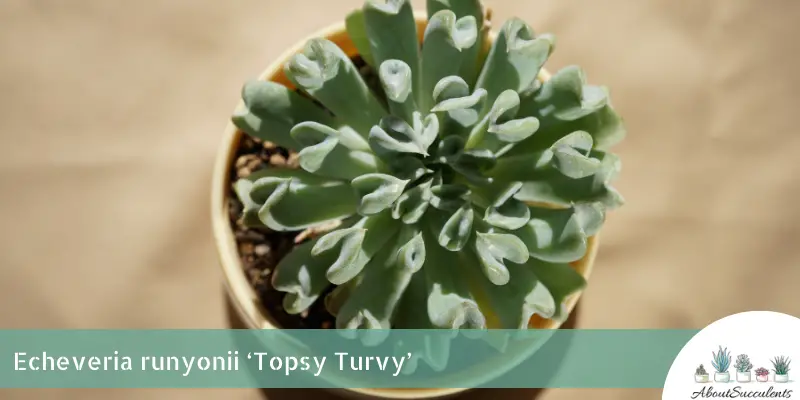
Add Echeveria runyonii ‘Topsy Turvy’ to your assortment of award-winning indoor succulents.
Topsy Turvy gained 2 prestigious awards – the Award of Backyard Advantage from the Royal Horticultural Society and Backyard Path journal’s October 2010 “Plant of the Month”.
Native to Mexico, this pretty evergreen succulent acquired its nickname due to its elegant, grayish-powder blue leaves that flip, spiral downward and type delicate rosettes.
Echeveria runyonii ‘Topsy Turvy’ can attain a peak of 12 inches (30.48 cm) indoors. Someday within the late summer time or fall months, Echeveria will produce star-shaped flowers that vary in coloration from yellow to orange.
5. Aloe ‘Doran Black’
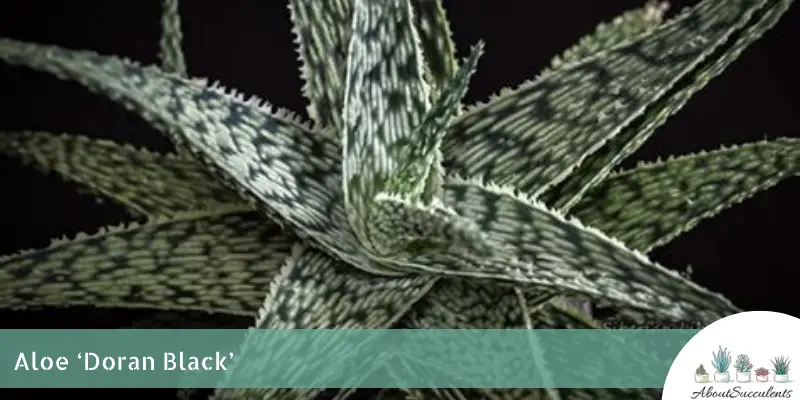
Aloe is a genus of succulents that continues to be a preferred selection of horticulturists trying to adorn their houses with crops. ‘Doran Black’ is quite a lot of Aloe that may undoubtedly create fascinating dialog amongst your home company.
Aloe ‘Doran Black’ is characterised by its darkish inexperienced leaves which might be accented with thick, white-colored bumps, and jagged margins. When you place Doran Black in a spot that will get a variety of daylight or beneath a Develop Gentle for six hours per day, the darkish inexperienced coloured leaves will assume a copper hue.
Doran Black produces offsets close to its base. You may pull out the matured offsets for propagation. The wonderful thing about having this peculiar-looking succulent in your house is that it could possibly produce bell-shaped, yellow to orange-colored flowers year-round if correctly cared for.
6. Kalanchoe beharensis ‘Fang’
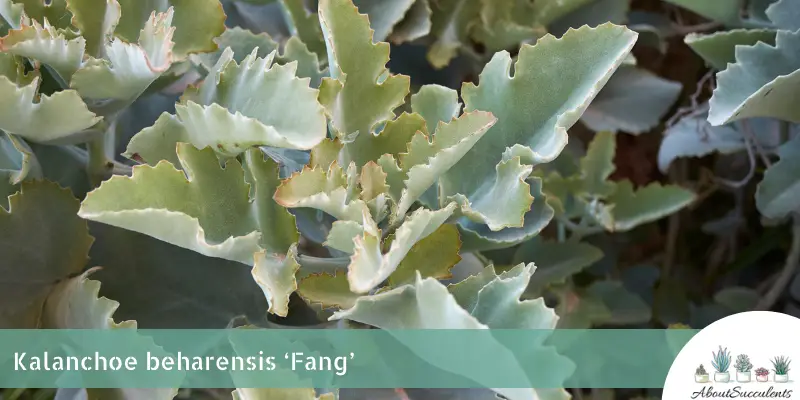
Kalanchoe beharensis ‘Fang’ goes by a number of fascinating nicknames corresponding to ‘Felt Plant’, ‘Felt Bush’, ‘Stalactite Plant Fang’, and ‘Velvet Leaf Kalanchoe’.
These names are borne out of this number of Kalanchoe’s odd, weirdly-beautiful look that’s recognized by its thick, triangular-shaped leaves which might be coloured bronze on the floor and silver-gray beneath.
The leaves are coated by wonderful silver hairs and triangular protrusions that give the impression of the foliage having fangs.
One other fascinating characteristic of Felt Plant is its floral blooms – clusters of small, urn-shaped flowers which might be coloured red-orange or yellow-green. Fang will bloom when it matures, usually within the late summer time or early fall months.
Nevertheless, Fang stays sought-after for its gnarly foliage. Much like ‘Zwartkop’ and ‘Topsy Turvy’, ‘Fang’ can also be a recipient of the distinguished Award of Backyard Advantage from the Royal Horticulture Society.
Conclusion
Whether or not succulents are used indoors to adorn a room in a easy bungalow or as a pure sunshade in a US$50-million residence in Monaco, these crops add life to any residing house.
When you reside in part of the world the place temperatures can drop beneath freezing, succulents change into the proper indoor plant to show your house heat and comfy.
So long as your succulent plant will get a variety of morning sunshine every single day and water at any time when its soil has utterly dried out, it should stay wholesome and pleased for a number of years.
Final Up to date on December 20, 2022 by Sofia Lara